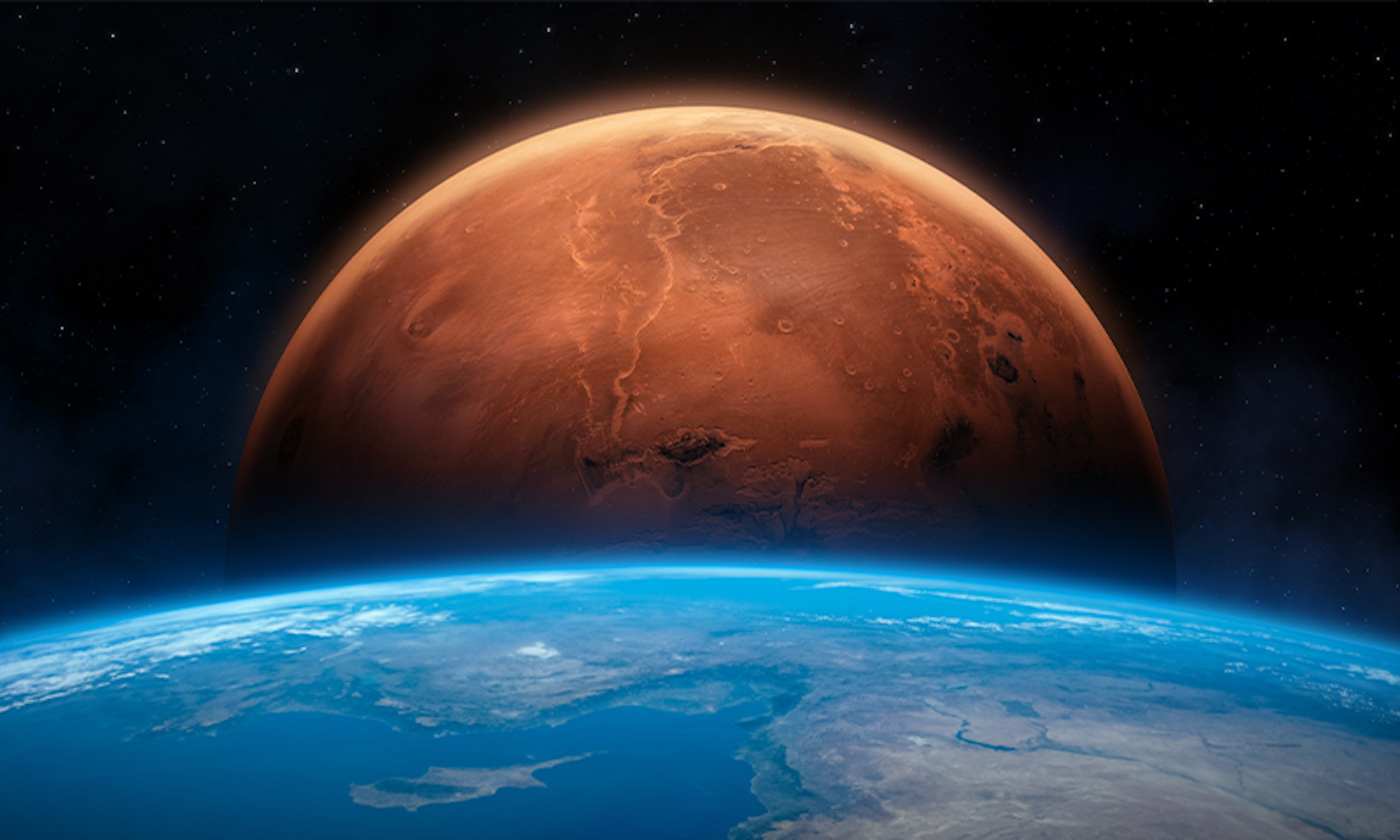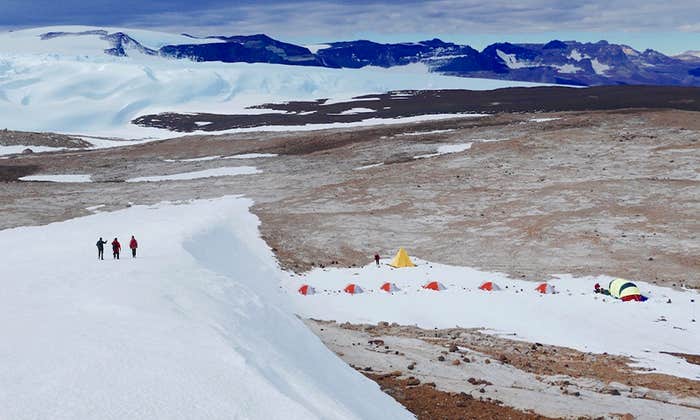Well into the space age, our thinking about the heavens is still entangled with ideas from ancient Greece. Like the classical Greek cosmologists, we tend to envision the heavenly realm as a place of order and harmony, with planets and moons in elegant, unchanging orbits.
As Johannes Kepler and Isaac Newton later showed, this is true in approximation. But in detail, the motions of the planets are messy and erratic. Like the squabbling gods the Greeks once imagined them to be, the planets tease and tug at each other, and these gravitational provocations cause them to tilt, wobble, and nod as they circle the sun. While science has abandoned the Greek belief in astrology—the idea that celestial bodies govern human destinies—the Earth as a whole really does feel the pull of other planets. In fact, the heavens may be responsible for some of Earth’s more unruly behaviors and even what we, after the Greeks, call “disasters”—literally, bad stars.
Analysis of ice cores has shown that gravitational effects on the Earth from the sun and nearby planets cause cyclical changes in our planet’s orientation and movement over thousands of years, influencing long term climate outcomes. Known as Milankovitch cycles, they are named for the Serbian geophysicist and astronomer Milutin Milankovitch who worked out their mathematical complexities in the 1920s. They seem to have modulated, for example, the glacial-interglacial oscillations during the Pleistocene, or the Ice Age, which lasted from about 2.5 million to 12,000 years ago.
It’s the geologic equivalent of a Rube Goldberg machine.
The Milankovitch cycles include shifts in how elliptical Earth’s orbit around the sun is (called its eccentricity); the amount of tilt of the Earth’s rotation axis (its obliquity); and which hemisphere leans toward the sun at different points in its orbit (precession). Each of these, over periods ranging from 19,000 to 400,000 years, affects the way that sunlight falls on the Earth, which in turn governs processes in our atmosphere, oceans, and ecosystems. These orbital cycles are like “super-seasons” lasting not months but tens of thousands of years.
Recently, French and Australian geoscientists found evidence that longer-term orbital variations have also affected Earth in the deeper geologic past. Known as “astronomical grand cycles,” these variations have periods of 1 million years or more. This makes them too long to detect even in the oldest ice in Antarctica, which dates to about 800,000 years ago. The new research, published in Nature Communications, instead uses data from a different natural archive: deep-sea sediments, which accumulate slowly and provide a high-fidelity record of climate and ocean conditions over geologic timescales.
The team, led by Adriana Dutkiewicz at the University of Sydney, compiled data from almost 300 deep-sea cores from around the world that contain records of Earth’s history spanning the past 70 million years. Although previous researchers have looked for signs of Milankovitch rhythms in sediments and sedimentary rocks (an approach called cyclostratigraphy), the new study is among the first to seek evidence of the longer-term astronomical grand cycles in sediments.
Previous work in cyclostratigraphy had considered gaps or discontinuities (hiatuses) in the sedimentary layers to be data defects—missing pages from the geologic logbook. Such gaps correspond to times when no new sediment accumulated, or existing sediments were somehow removed. Earlier studies considered only uninterrupted sedimentary records to be useful. But Dutkiewicz and her coauthors realized that the hiatuses themselves could be important signals because they represent times when deep-sea currents were powerful enough to erode sediments on the seafloor.
By analyzing how often these periods of “silence” occur in the sediment record, the team discovered a previously unrecognized cyclical nature to the physical behavior of the world’s oceans. They found evidence of these recurring changes in global ocean currents that play out over millions of years. Even more remarkable is that the cycle seems to be driven, indirectly, by the planet Mars.
At the heart of the scientists’ work is a statistical method called Fourier analysis. Just as a prism can separate white light into different colors, or wave frequencies, a Fourier analysis separates complex time-series data (noise) into different frequencies (pitches). In the case of the sea-sediment data, Fourier analysis revealed that the hiatuses—gaps in the sedimentary record—have a strong 2.4-million-year periodicity, meaning that every 2.4 million years, the churn of ocean circulation becomes more vigorous and “scrubs” the deep seafloor, partly erasing the sedimentary record of the preceding interval. The researchers argue that these episodes coincide with a particular astronomical grand cycle related to a weak gravitational interaction between Earth and Mars, as the eccentricities of the two planets’ orbits—or how more or less elliptical they are—go in and out of synchrony with each other over in time.
But why would tiny changes in the gravitational pull of Mars on Earth affect our oceans? Dutkiewicz and her colleagues propose a connection that is the geologic equivalent of a Rube Goldberg machine. When the orbits of Earth and Mars are at critical points in the 2.4 million year cycle, global temperatures on Earth tend to be around 1.75 degrees Celsius higher than average, and seasonal contrasts between winter and summer are highest. This can trigger changes in the way ocean currents transport heat around the globe and, in turn, increase the intensity of deep-sea circulation. And this ultimately causes hiatuses to form in the sedimentary record.
There was no ice at the poles and sea level was more than 325 feet higher than today.
For geoscientists like me, the most controversial conclusion of the new paper is that the “Paleocene-Eocene Thermal Maximum” (PETM), a sudden spike in global temperatures that occurred 55 million years ago—and considered a cautionary ancient (if slower) analog to modern-day climate change—was triggered by a disruption in the 2.4 million-year Earth-Mars astronomical grand cycle. The researchers note that the grand cycles themselves are cyclically unstable, meaning they are periodically interrupted by times of “chaos” before settling again in their longer-term rhythms. The authors observe that the 2.4 million-year signal in their hiatus data breaks down at the time of the PETM and suggest that the climate catastrophe—the sudden uptick in global temperatures—was somehow linked with one such interval of what they call “Solar System chaos.”
What makes the PETM period notable—and terrifying—is that carbon dioxide in the atmosphere abruptly increased, the oceans became severely acidified, and both marine and land-based ecosystems were destabilized. Geochemical analysis of carbon-bearing rocks like limestones from that interval indicate that the sudden influx of carbon dioxide came from photosynthetically fixed carbon—that is, carbon taken in by plants or phytoplankton and later transformed to oil, gas, peat, or coal (known to humans as fossil fuels). It’s possible that volcanic activity in the North Atlantic region caused this by igniting coal beds in many places. Global temperatures as a result rose by almost 10 degrees Celsius and remained high for about 170,000 years.
Many geologists consider the PETM a sobering glimpse of what the next few millennia might be like on Earth. During the PETM, there was no ice at the poles, sea level was more than 325 feet higher than today, and there were palm trees in Wyoming.
What’s lacking in the new study from Dutkiewicz and her team is a detailed explanation for how an event as extreme as the PETM might have been triggered by the disruption of weak gravitational interactions between Earth and Mars. Indeed, they acknowledge that narrowing of a submarine corridor in the Norwegian-Greenland sea, by plate tectonic movements at around 56 million years ago, probably had a greater effect on ocean circulation at the time. Constricting this passageway would have limited the volume of ocean water transported into and out of the Arctic ocean basin.
If there is any astronomical connection to the PETM, it can only be because a small orbital “nudge” was hugely amplified in some complex way by Earth itself through more localized knock-on effects involving interactions between the ocean, atmosphere, rocks, and lifeforms. But the study has no explanation for how a tiny tug from Mars could have unleashed the immense volumes of carbon dioxide that turned Earth into a Hades-like hothouse for more than 100,000 years.
There is something undeniably appealing about detecting a coherent astronomical signal in the muddy record of deep-sea sediments. But there is also danger in viewing Earth as a helpless marionette bobbling in space at the gravitational whim of other objects. If we believe that Earth’s climate is governed primarily by astronomical forces, we may be tempted to think we need not be concerned about the planetary-scale effects of our own actions. The climate system is immensely complex, and to think that its variability can be linked to a single cause is hubris, the fatal flaw of so many heroes of Greek myth. ![]()
Lead image: buradaki / Shutterstock




























